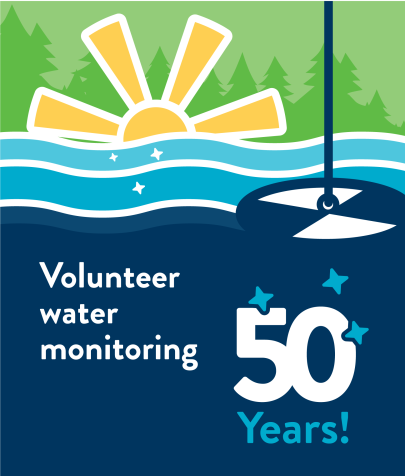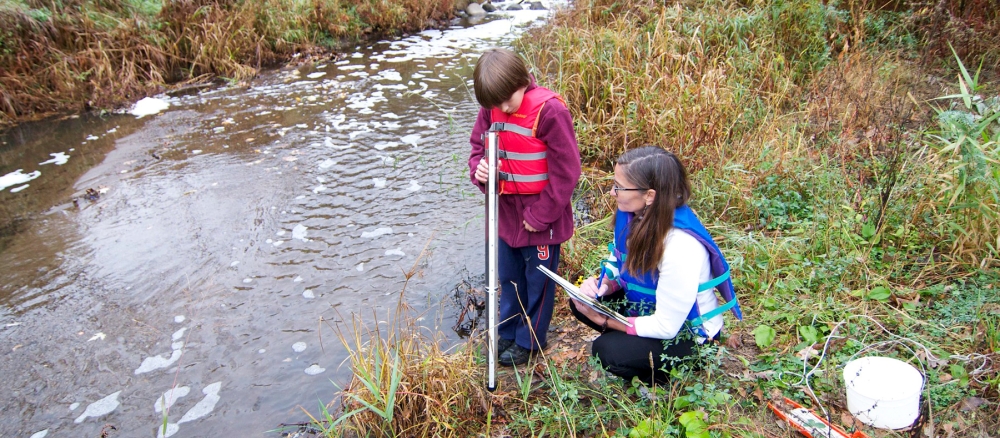
The MPCA’s Volunteer Water Monitoring Program is one of the country’s oldest active programs of its kind and celebrates 50 years this summer! The University of Minnesota launched the program in 1973 — the same year Congress passed the Clean Water Act — and transferred it to the MPCA five years later. Since then, this program has empowered residents of Minnesota, helping them better understand the health of our state’s waters.
Over these past 50 years, the Volunteer Water Monitoring Program has supported thousands of volunteers in collecting hundreds of thousands of water-clarity readings on Minnesota water bodies. From small ponds to a Great Lake and babbling brooks to raging rivers, it encompasses rural farmland, highly developed urban areas, and all manner of space in between. Some volunteers find a true calling with the program — monitoring their beloved spot for 20, 30, or even 40 years.
50 years of volunteer monitoring adds up:
- 4,582 lakes have been monitored by volunteers.
- 2,571 stream sites have been monitored by volunteers.
- Nearly 10,000 people have participated in the program.
Become a volunteer
Join us! Check for site availability near you or reach out via email at watervolunteers.mpca@state.mn.us. Be sure to join our Facebook group for important program updates, water quality information, and community discussions with other volunteers.
A lifelong fascination
At the age of eight or nine, Richard Adair developed an interest in Minnesota lakes when he spent summers in the 1950s with his grandparents in Grand Rapids.
"From the bus windows, my sister and I could see Lake Mille Lacs from Highway 169. It looked like the ocean, and we were in complete awe," Adair said.
Holding onto that fascination as he grew up, Adair bought a cabin on his beloved, ocean-like lake and became a volunteer water monitor where he has been observing changes both big and small for 31 years.
“When zebra mussels arrived, the lake went through the cycle of population explosion, then retreated to a stable but lower level,” Adair said. “I could observe this in my readings. The lake was shockingly clear for a couple of years as zebra mussels improve water clarity by eating small plankton, and now is almost back to where it had been prior.”
Adair now has five grandchildren who enjoy helping lower the Secchi disk into the lake and record the depth when it disappears. Along the way, they often talk about our changing climate and how it affects the environment around them.
“For 31 years, I have felt involved with my lake. Being a volunteer water monitor helps us all feel like we're doing something to help protect it,” Adair says.
A family affair
For the past 36 years, checking Long Lake’s water clarity often involves the whole family for volunteer water monitor Sheri Berg. First, her children helped her check the clarity of the lake in the Detroit Lakes area, and now her grandchildren accompany her.
“They all know how to do it, and sometimes we all go out together on the pontoon,” Berg said.
When they started taking measurements in the mid-1980s, clarity in Long Lake was about 16-17 feet, but it gradually worsened, declining to about 11-12 feet, until recently when it improved again. This was a few years after most of the homes on the lake hooked up to the city sewer.
“We don’t know why but the lake is much clearer now. We even had to ask them to send us a longer rope since we ran out at 25 feet and could still see the disk!” Berg said.
Berg retired from state employment a few years ago after working almost the same number of years as the family has been volunteer monitors. “I probably won’t ever ‘retire’ from monitoring,” Berg says. “We will likely continue to do it because the kids and grandkids love doing it so much, and I’m always curious how the lake is doing.”
Anyone can make a difference
This long-term data gathering initiative helps track trends in water bodies around the state. Both old and new data are crucial in comprehending how conditions change over time and whether water quality meets standards set by the Clean Water Act.
Whether someone is a long-time volunteer, or samples water for just a summer or two, anyone can make a difference. What is most important is that someone is doing it.
Above all, we are immensely grateful to every volunteer who has dedicated their time to monitoring their favorite lake or stream. The 50-year milestone is significant, and we look forward to another 50 years.
